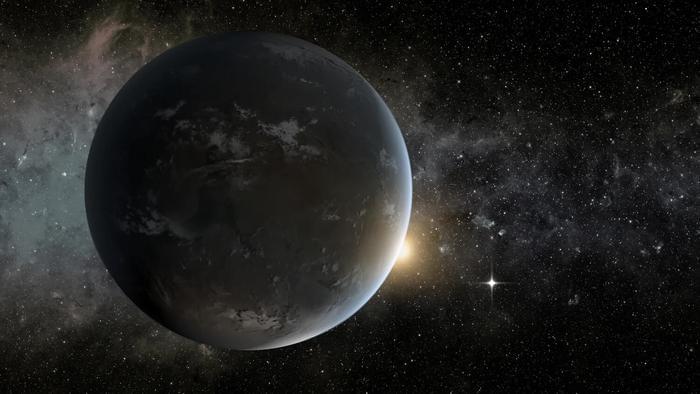Are Sun-like stars the only stars where Earth-like worlds exist? This is what a recent study presented this morning at the 2026 meeting of the America | Space


Questions to inspire discussion.
Commercial Availability & Pricing.
A: Unitree is reportedly eyeing a $7 billion IPO, reflecting growing investor confidence in humanoid robotics as a serious commercial category with clear trajectory toward public, industrial, and commercial space operations.
Technical Specifications & Capabilities.
🤸 Q: What physical capabilities does the Unitree H2 demonstrate and how is it engineered?
A: The H2 humanoid performs flying kicks, backflips, and sandbag strikes using 31 degrees of freedom (12 in shoulders, 6 per arm, 3 in torso, 7 per leg), showcasing agility for potential real-world applications.

The giant planet Jupiter has nearly 100 known moons, yet none have captured the interest and imagination of astronomers and space scientists quite like Europa, an ice-shrouded world that is thought to possess a vast ocean of liquid salt water. For decades, scientists have wondered whether that ocean could harbor the right conditions for life, placing Europa near the top of the list of solar system bodies to explore.
A new study led by Paul Byrne, an associate professor of Earth, environmental, and planetary sciences, throws cold water on the idea that Europa could support life at the seafloor. The study was published in Nature Communications.
Co-authors from the Department of Earth, Environmental, and Planetary Sciences include Professor Philip Skemer, associate chair of the department; Professor Jeffrey Catalano; Douglas Wiens, the Robert S. Brookings Distinguished Professor; and graduate student Henry Dawson. Byrne, Skemer, Catalano, Wiens, and Dawson are also members of the McDonnell Center for the Space Sciences.

Astronomers have captured the most detailed look yet at faraway galaxies at the peak of their youth, an active time when the adolescent galaxies were fervently producing new stars.
The observations focused on 18 galaxies located 12.5 billion light-years away. They were imaged across a range of wavelengths from ultraviolet to radio over the past eight years by a trio of telescopes: NASA’s Hubble Space Telescope; NASA’s James Webb Space Telescope (JWST); and ALMA (Atacama Large Millimeter/submillimeter Array) in Chile, of which the U.S. National Science Foundation National Radio Astronomy Observatory is a partner. Data from other ground-based telescopes were also used to make measurements, such as the total mass of stars in the galaxies.
“With this sample, we are uniquely poised to study galaxy evolution during a key epoch in the universe that has been hard to image until now,” says Andreas Faisst, a staff scientist at IPAC, a science and data center for astronomy at Caltech. “Thanks to these exceptional telescopes, we have spatially resolved these galaxies and can observe the stages of star formation as they were happening and their chemical properties when our universe was less than a billion years old.”



Our sun spins on its axis about once every 28 days. Because of that, any active region can be watched from earth for only around two weeks before it turns out of view, then it stays hidden for roughly another two weeks on the far side.
“Fortunately, the Solar Orbiter mission, launched by the European Space Agency (ESA) in 2020, has broadened our perspective,” says Ioannis Kontogiannis, solar physicist at ETH Zurich and the Istituto ricerche solari Aldo e Cele Daccò (IRSOL) in Locarno.
Why 2026 Changes Everything for Tesla, Grok & SpaceX
## Elon Musk’s companies, including Tesla and SpaceX, are expected to experience significant breakthroughs and growth in 2026, driven by advancements in AI, robotics, and space technology.
## Questions to inspire discussion.
Tesla Robotaxi & Cybercab Strategy.
🚖 Q: When will Tesla’s Cybercab production begin and what regulatory hurdle must be cleared first? A: Cybercab production is set to begin on April 1, 2026, but requires federal regulations on autonomous ride-hailing since current rules mandate steering wheels and pedals for non-experimental vehicles.
🚗 Q: How will Tesla’s robotaxis function as an advertising strategy? A: Robotaxis will serve as Tesla’s primary advertising strategy by acting as an Uber-like service that demonstrates the cars’ capabilities and encourages personal ownership, potentially reducing the need for traditional advertising.


Using new observations from NASA’s Hubble Space Telescope and ground-based observatories, astronomers have tracked the influence of a recently discovered companion star, Siwarha, on the gas around Betelgeuse. The research, by scientists at the Center for Astrophysics | Harvard & Smithsonian (CfA), reveals a trail of dense gas swirling through Betelgeuse’s vast, extended atmosphere, shedding light on why the giant star’s brightness and atmosphere have changed in strange and unusual ways.
The results of the new study were presented Monday at a news conference at the 247th meeting of the American Astronomical Society in Phoenix. The paper has been accepted for publication in The Astrophysical Journal and is available on the arXiv preprint server.